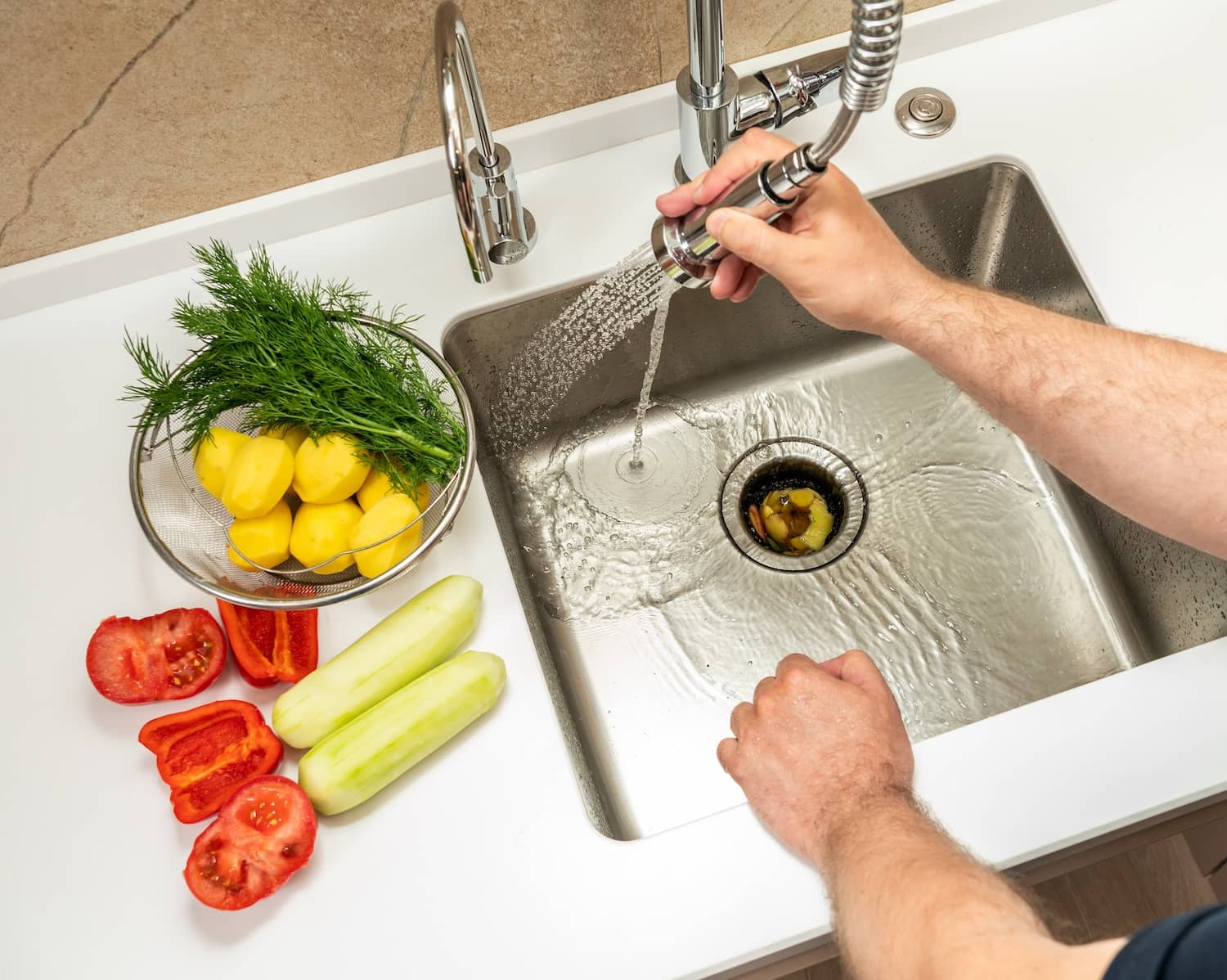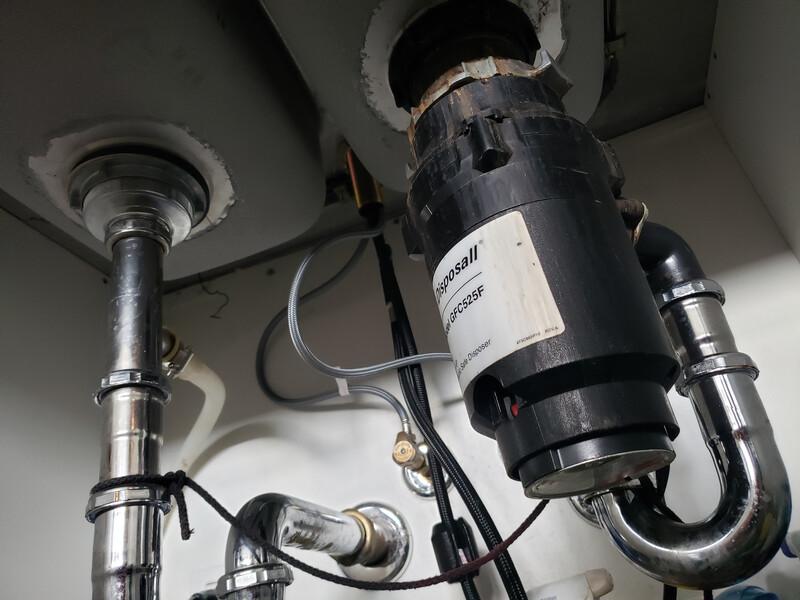Practical Techniques for Repairing a Dripping Garbage Disposal
Practical Techniques for Repairing a Dripping Garbage Disposal
Blog Article
We have unearthed the article about Why Is My Garbage Disposal Leaking From the Bottom? down the page on the internet and decided it made good sense to write about it with you over here.

Garbage disposals are necessary kitchen appliances that assist in throwing away food waste successfully. Nonetheless, a leaking waste disposal unit can be a frustrating and messy problem to manage. Luckily, many leakages can be repaired quickly with a couple of basic steps. In this write-up, we will talk about exactly how to repair a dripping garbage disposal efficiently.
Introduction
Garbage disposals are set up under kitchen area sinks and are designed to shred food waste right into smaller sized items, permitting it to pass through the pipes system easily. While these devices are normally trusted, leakages can occur gradually as a result of deterioration, loosened connections, or damage to the device.
Step-by-Step Guide to Repairing a Dripping Waste Disposal Unit
Shut off the Power
Prior to trying any type of fixings, ensure that the power to the garbage disposal system is switched off to prevent the threat of electrical shock.
Find the Leakage
Identify the specific place of the leak and determine the reason
Tighten up Links
Make use of a wrench to tighten up any kind of loosened links between the disposal device and the plumbing system.
Change Seals or Gaskets
If the leak results from worn seals or gaskets, eliminate the old parts and change them with brand-new ones.
Patching Splits or Openings
For splits or openings in the disposal unit, use epoxy or an ideal patching material to seal the broken area.
Recognizing the Source of the Leak
Before trying to repair a dripping waste disposal unit, it is necessary to recognize the resource of the leak. This can commonly be done with aesthetic examination or by carrying out straightforward tests.
Visual Examination
Evaluate the garbage disposal unit carefully for any kind of signs of water leakage. Pay attention to locations around seals, gaskets, and connection factors.
Evaluating for Leakages
One way to test for leaks is by running water with the disposal device and looking for any kind of noticeable indicators of leakage.
Common Causes of Leakages in Trash Disposals
Worn Seals and Gaskets
Seals and gaskets play an essential role in avoiding water from leaking out of the waste disposal unit. In time, these elements can deteriorate, leading to leaks around the disposal unit.
Loose Connections
The links between the waste disposal unit and the plumbing system can become loose gradually, causing water to leak out during procedure.
Fractures or Holes in the Disposal Device
Physical damages to the garbage disposal, such as fractures or holes in the housing, can also lead to leakages.
Tools and Products Needed for Repairing a Leaking Garbage Disposal
Before beginning the fixing process, collect the essential tools and products, including a screwdriver, adjustable wrench, plumbing professional's putty, replacement seals or gaskets, and epoxy or patching material for repairing fractures or openings.
Examining the Waste Disposal Unit After Repair Service
As soon as the repair is complete, check the waste disposal unit by running water through it to guarantee that the leak has been fixed.
Preventive Maintenance Tips to Avoid Future Leakages
To stop future leakages, it is essential to execute regular upkeep on your garbage disposal. This includes maintaining it tidy, avoiding placing non-food products or difficult objects down the disposal, and regularly checking for leaks or various other concerns.
Final thought
Finally, repairing a dripping waste disposal unit is a reasonably uncomplicated procedure that can be completed with standard tools and products. By complying with the steps described in this post and practicing precautionary upkeep, you can keep your garbage disposal in good working problem and prevent pricey repair work in the future.
What to Do About a Leaking Garbage Disposal
A leaking garbage disposal often goes unnoticed until you confront a sopping cabinet, a foul-smelling puddle, or an audible drip-drip-drip from the unit. The fix can be frustrating, too, because the leak can stem from a number of components in the system. Fortunately, with a little sleuthing, you can zero in on the leak and—depending on the exact location—stop the icky oozing and repair the component that caused it. Worst case scenario, if it turns out that the garbage disposal must be replaced, installing a new one is a reasonable do-it-yourself task for those with basic plumbing skills. Read on to keep the cash you’d otherwise hand over to a pro.
Prepare to find the leak
Prior to testing the garbage disposal for leaks, unplug it at the wall outlet and turn off the power from the breaker box to prevent electrical shock. Then insert a watertight sink stopper into your sink drain and wipe the unit dry with a clean cloth. In any handy container, mix a few drops of food coloring into a few cups of water, and pour the dyed water onto the sink stopper to help you locate the leak.
Investigate the source
the top, where the disposal meets the sink drain the side, where the dishwasher hose or main drain pipe connects to the disposal or the bottom of the unit Inspect each of these locations while gliding a light-colored rag over the unit; the dyed water will readily show on the rag and reveal the location of the leak. If a leak isn’t immediately apparent, remove the sink stopper and pour a few more cups of dyed water down the sink drain, then check for leaks again. Leaks near the top of the unit are more likely to show themselves while the sink is plugged, while side and bottom leaks are more noticeable while the sink is unplugged.
The metal sink flange that sits directly inside the sink drain is typically sealed around the top with plumber’s putty (a clay-like sealant) and then secured from under the sink with bolts. If the plumber’s putty deteriorates, or the bolts loosen, the flange can no longer form a watertight seal between the sink drain and the disposal—which could cause a leak at the top of the unit.
To reseal the leaky flange, you must first detach the garbage disposal. Start by loosening the screws securing the main drain pipe to the disposal, then loosen the screws in the metal clamp securing the dishwasher hose to the disposal and detach the drain pipe and dishwasher hose from the disposal. Loosen the screws in the mounting ring that connects the disposal to the metal mounting assembly beneath the sink, then pull down the disposal and carefully set it on a clean, dry surface. Loosen the bolts in the mounting assembly with a wrench, then pull down the mounting assembly and set it near the disposal.

I hope you liked our excerpt on The Handy Guide To Fixing Your Garbage Disposal Leaking. Thanks so much for taking a few minutes to browse our article post. Sharing is nice. Helping others is fun. Many thanks for taking the time to read it.
Call Today Report this page